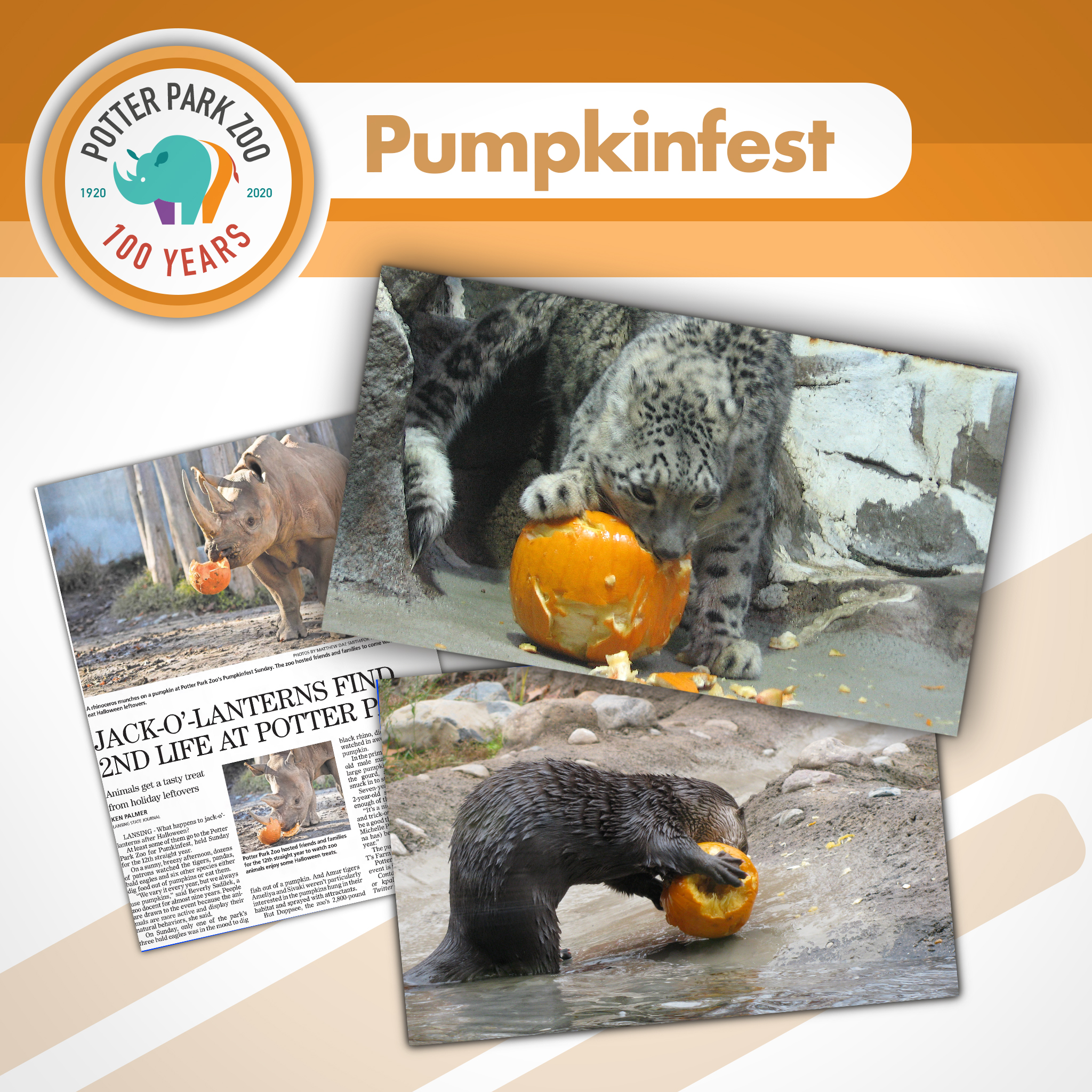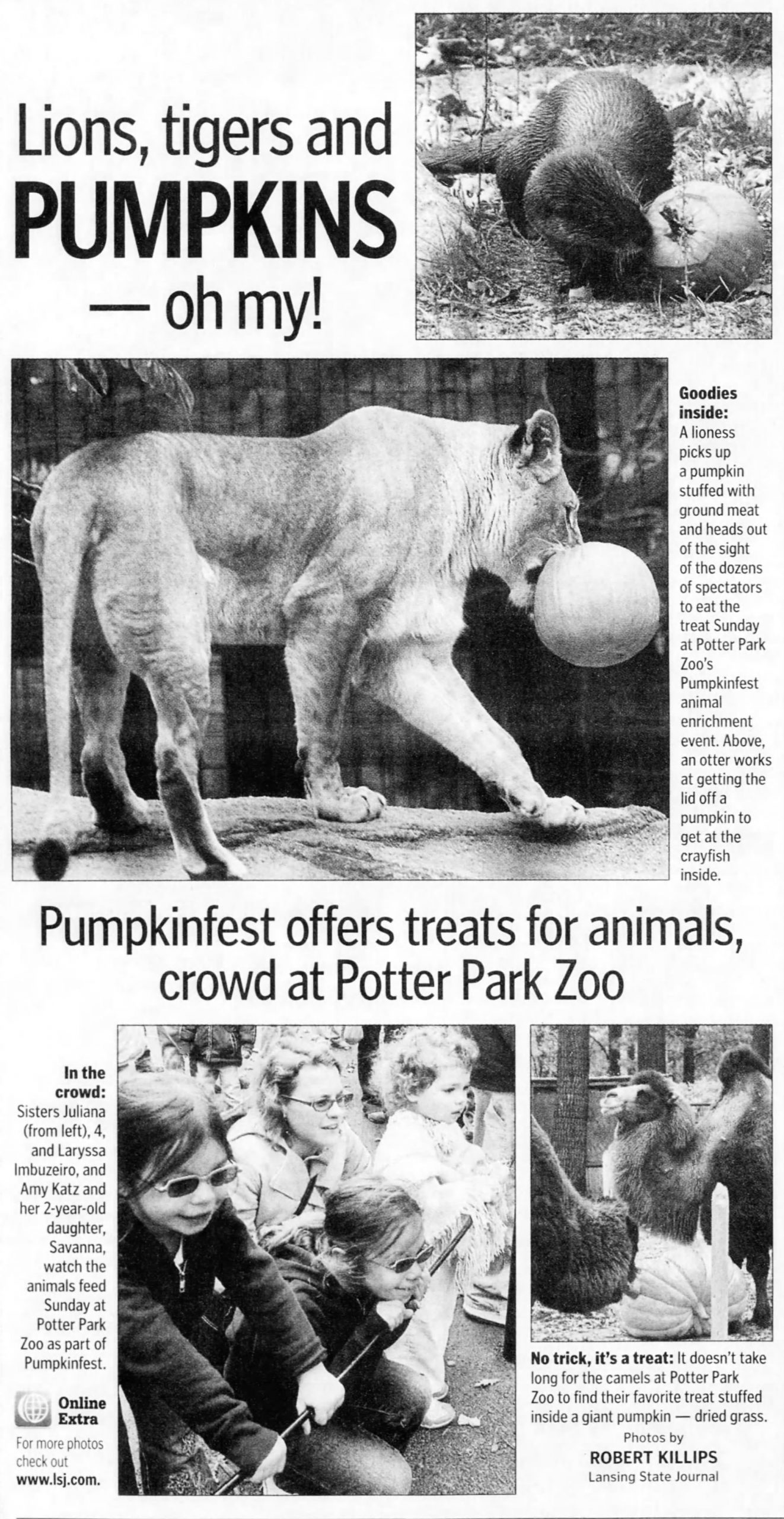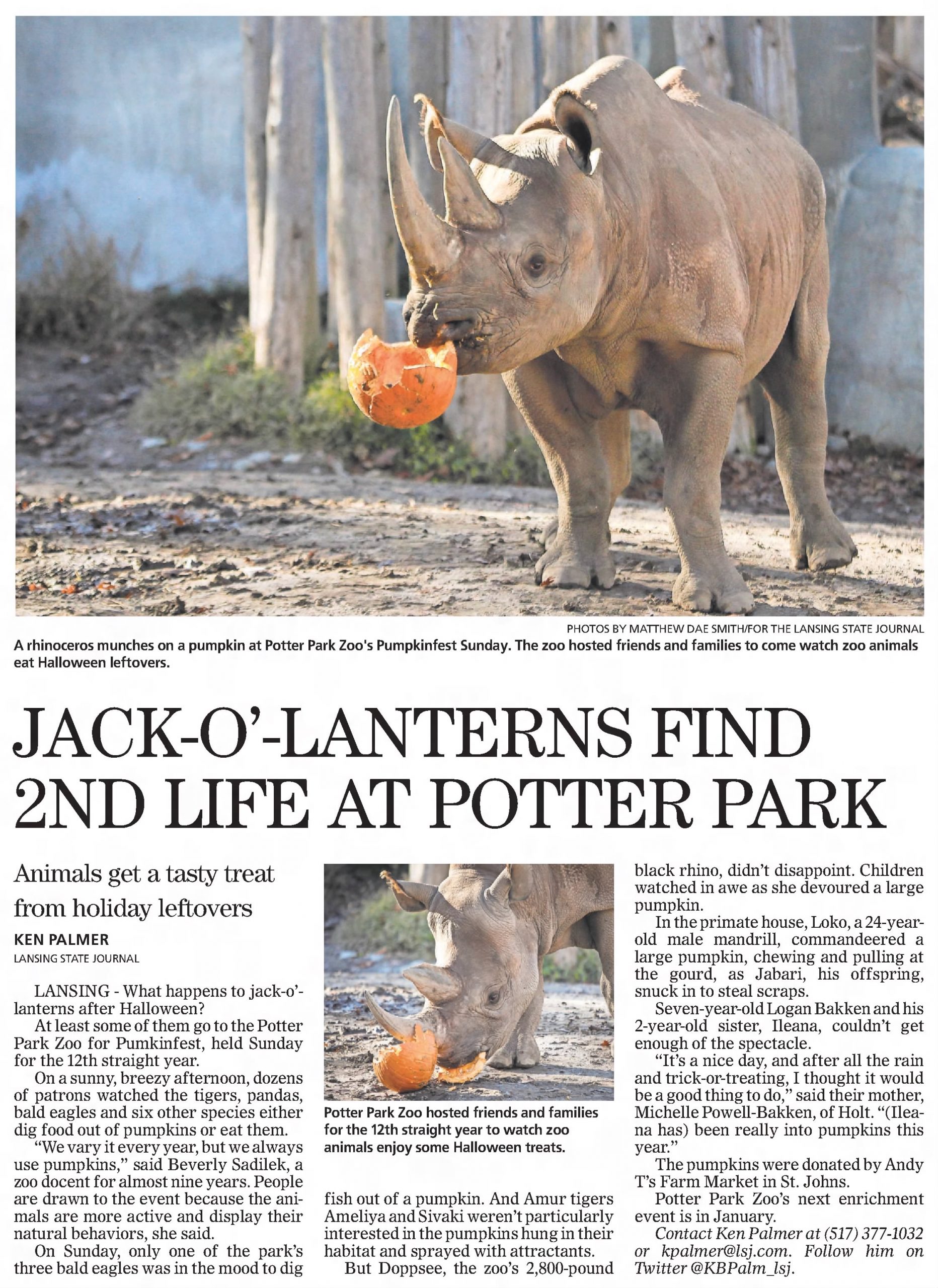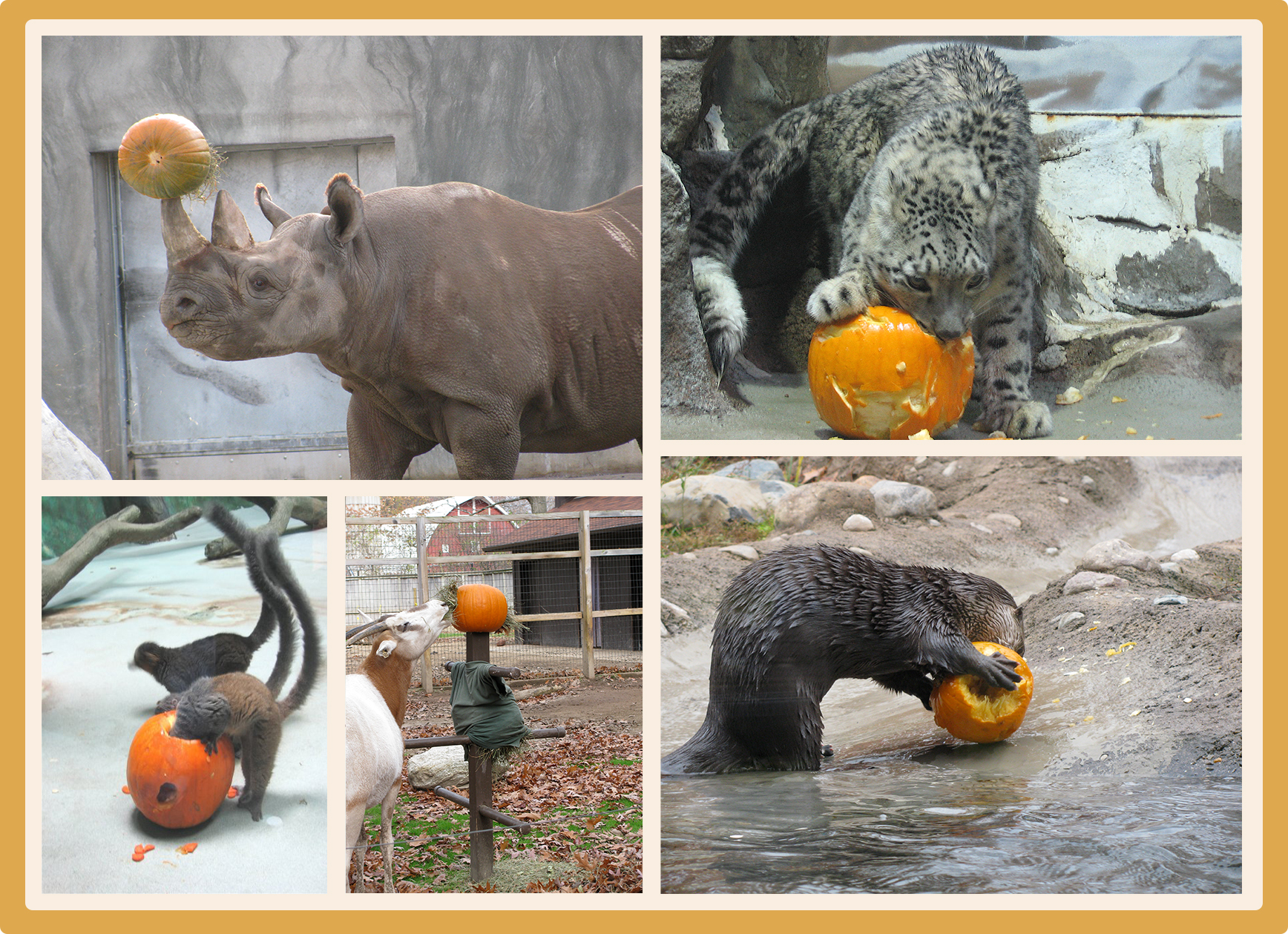 Do you ever wonder what would happen if you gave a pumpkin to a porcupine? Or an otter? How about a rhinoceros? For fifteen years, as part of a special enrichment event known as Pumpkinfest, the volunteer Enrichment Team at Potter Park Zoo has done just this! Pumpkinfest is just one of many opportunities we use to share animal care with the public, and provide new and interesting enrichment for our animals.
Do you ever wonder what would happen if you gave a pumpkin to a porcupine? Or an otter? How about a rhinoceros? For fifteen years, as part of a special enrichment event known as Pumpkinfest, the volunteer Enrichment Team at Potter Park Zoo has done just this! Pumpkinfest is just one of many opportunities we use to share animal care with the public, and provide new and interesting enrichment for our animals.
 What is enrichment? Enrichment describes any stimulus that offers novel experiences, encourages choice, and stimulates natural behaviors in our animals. These provisions are essential to an animal’s mental and physical welfare, and happen daily thanks to our dedicated zookeepers. Enrichment activities are also valuable opportunities for education, and are frequently shared on our social media to highlight little-known aspects of animal care.
What is enrichment? Enrichment describes any stimulus that offers novel experiences, encourages choice, and stimulates natural behaviors in our animals. These provisions are essential to an animal’s mental and physical welfare, and happen daily thanks to our dedicated zookeepers. Enrichment activities are also valuable opportunities for education, and are frequently shared on our social media to highlight little-known aspects of animal care.
In 2004, a group of volunteers were inspired by an intern’s project, and launched a cooperative effort with zookeepers to increase enrichment offerings throughout the zoo. This group became the Enrichment Team. Following the intern’s lead, the team involved themselves in all aspects of enrichment – brainstorming ideas, obtaining approval, scheduling sessions, delivering prepared items to the zookeepers, and documenting how the animals responded to their enrichment items. They also interpreted the sessions for visitors, explaining how the animals’ actions corresponded to natural behaviors in their wild counterparts.
 This work culminated in four or five special events throughout the year that would showcase enrichment to the public. Pumpkinfest was the first in 2004, occurring in November at the tail-end of the fall season (Additional events have included Winter Gifts, Just Chillin’, and Tailgate for the Animals). The Enrichment Team’s schedule typically offered two hours of enrichment for eight or nine exhibits, and moved on every 15 minutes. Pumpkins, of course, were the common theme, and were sourced from Boo at the Zoo’s leftovers. Their particular role in enrichment, however, would vary depending on the animal and its natural behaviors and abilities.
This work culminated in four or five special events throughout the year that would showcase enrichment to the public. Pumpkinfest was the first in 2004, occurring in November at the tail-end of the fall season (Additional events have included Winter Gifts, Just Chillin’, and Tailgate for the Animals). The Enrichment Team’s schedule typically offered two hours of enrichment for eight or nine exhibits, and moved on every 15 minutes. Pumpkins, of course, were the common theme, and were sourced from Boo at the Zoo’s leftovers. Their particular role in enrichment, however, would vary depending on the animal and its natural behaviors and abilities.
Predators like the big cats might be given whole pumpkins with scents on them to stimulate their sense of smell, or receive meat from their daily diet hidden inside to arouse their predatory instinct. Visitors were delighted to see the snow leopard bat objects around like a kitten and shred the pumpkin. Tigers, on the other hand, were more likely to tear the pumpkin open using their jaws. The otters showed off their playful nature, treating the pumpkin like a ball in their pool. Despite being predators, they also enjoyed consuming them.
For primates, the pumpkins were carved and filled with fruit or vegetables, challenging them to use dexterity and problem-solving skills to retrieve the treats. The lemurs would carefully reach through the openings with their faces or forelimbs, while mandrills were not so dainty, biting into the pumpkin and eating it along with the treats. The spider monkeys tackled the challenge with some additional assistance from their prehensile tails.
Doppsee, our female rhino, enjoyed the pumpkin as a food item. She would pop it open while manipulating it with her prehensile lip, or skillfully pressing down on it with her horn. She also exhibited her playful side by lifting the pumpkin (or other objects like empty food bowls) onto her horn.

These events, along with regular daily enrichments, reflect a growing trend in the zoo world towards quality animal care. At Potter Park, enrichment has grown tremendously over the past few decades, and our volunteer Enrichment Team continues to lead special enrichment days and play a supporting role in education for various audiences. The team finds great satisfaction in contributing to animal welfare and building deeper connections with the animals and their wild counterparts. By bringing enrichment to a wider audience, they ensure that visitors and fans can share in these experiences too.
Do you have a story about enrichment you have seen at the zoo? Share your story. Go to “Contact” on this website and leave a message in the drop-down menu to “What is your message regarding?” – “Story Submissions for Zoo Centennial.” Please include the decade or general time frame that applies to your story.



